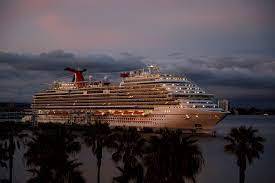Clia cruise line members have agreed to pursue net carbon neutral cruising by 2050 as the association reported “continued progress” on the development of environmental technologies.
Lines have agreed to a 40% reduction of carbon emissions across members’ 267 ships by 2030, compared to 2008.
Of the 242 ships that report data to Clia, 35% have shoreside power capability – an increase of 2.3 percentage points from last year.
Currently 14 ports around the world have shoreside power facilities. Plugging into shoreside power when a ship is docked in port reduces overall emissions.
Clia said around 22% existing ships are scheduled to be retrofitted with shoreside electricity systems, and 82% of incoming ships will be fitted with shoreside power capability or will be configured to add shore power in the future.
In terms of liquefied natural gas (LNG), 52% of incoming vessels have committed to relying on the greener fuel as their primary propulsion. This represents an increase of three percentage points compared to 2020.
Currently, four ships in service use LNG which Clia says has “virtually zero sulphur emissions” and up to a 20% reduction in greenhouse gas emissions. P&O Cruises launched its first LNG-powered ship – Iona (pictured) – this year.
Clia’s report also detailed how all new ships were due to be fitted with advanced wastewater treatment systems (AWTS) – up from 99% last year. Nearly three quarters of ships now operating use AWTS – a four percentage point rise over 2020.
More than 76% of global capacity uses Exhaust Gas Cleaning System (EGCS) to meet or exceed air emissions requirements, representing an increase of seven percentage points over 2020.
Additionally, 94% of non-LNG-powered new builds will have ECGS installed, Clia said.
Outlining the challenges ahead, Clia Europe’s director general Ukko Metsola stressed the need to develop alternative fuels.
He added that ships would likely adopt different fuels going forward depending on which maritime sector they were part of.
Ammonia, he said, is “more likely” to be used by container ships. Other fuel types being developed – include biodiesel, methanol, hydrogen and electric batteries.
Ammonia can burn in an engine without emitting carbon dioxide as it contains no carbon, however it has to be stored at minus 253C.
Burning ammonia can create nitrous oxides so the exhaust needs cleaning up and is toxic so requires careful handling and storage.
Metsola said: “If you look at the commercial order book 80% are commercial ships. The cruise industry needs to be at the heart of this process and we will be at the heart of this green transition.
“We, as cruise lines, are the industry that underpins the entire maritime cluster.”
But he added that ships were the “hardest mode of transport” to decarbonise.
Kelly Craighead, Clia’s president and chief executive, said: “While cruise has been one of the sectors most acutely impacted by the global pandemic, cruise lines remain at the forefront of the challenge to develop new environmental technologies which benefit the entire shipping industry.
“Our industry is committed to pursuing net carbon neutral cruising by 2050, and Clia and our ocean-going members are investing in new technologies and cleaner fuels now to realise this ambition.”
Clia global chair Pierfrancesco Vago agreed that there was “more to be done” but added that the cruise sector had demonstrated its ability to “rise to the challenge”.
Clia joined other maritime organisations to propose a $5 billion fund to support International Maritime Organisation research and development.
The money will be earmarked to be used to “accelerate” the development of zero greenhouse gas fuels and propulsion technologies, Vago said.
SOURCE : travelweekly




